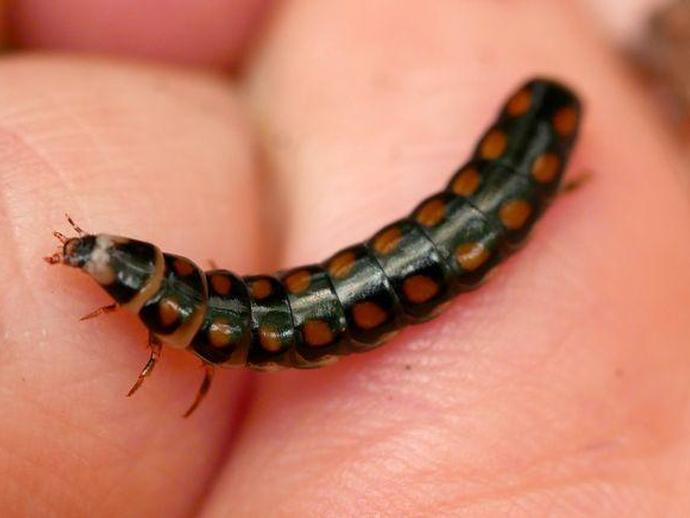June 23, 2021
It's time for another edition of #BenInNature presented by our friends at Carter Bank & Trust!
This is a beetle larva belonging to the genus Phengodes, and it's one of the most fascinating beetles you're liable to find! Also known as "glow-worm beetles" or "railroad worms," Phengodes larvae are predators of millipedes.
The way these larvae eat millipedes isn't for the faint of heart. When one finds a millipede, it bites the thin membrane between its head and its first trunk segment and injects a paralytic toxin that not only immobilizes the millipede but also prevents it from releasing cyanide (many millipedes release small amounts of cyanide as a defense, and it smells like almonds or cherries). After the millipede is paralyzed, the Phengodes larvae decapitates it and begins crawling through the millipede's body, eating as it goes. I hope you weren't eating anything when you started reading this!
Female Phengodes beetles are "larviform," meaning that adult females still resemble larvae. The males, meanwhile, are brown beetles with tiny elytra (the hard shell that covers the flight wings, although in the case of Phengodes, the elytra barely cover the flight wings at all) and big feathery antennae.
As if all that weren't enough, Phengodes larvae also glow in the dark! If you'll indulge me for a moment, I'll share my own personal Phengodes story. About ten years ago, I was working as a security guard at a hydroelectric dam. One night as I was doing my rounds, I spotted something glowing in the grass. I bent down to find a Phengodes larva exactly like the one pictured.
I had never seen anything like it and I couldn't find it in my insect field guide, so I immediately became convinced that I had discovered a new species unknown to science. I put the larva in a jar and brought it to the Virginia Museum of Natural History and asked to speak to the late great Dr. Richard Hoffman. I had volunteered in his lab when I was in fifth grade and I was excited to see if he would name this new species after me. Of course, he identified it from 20 feet before the jar was fully out of my pocket, but he kindly spent a few minutes telling me all about Phengodes beetles!
ABOUT #BenInNature
Social distancing can be difficult, but it presents a great opportunity to become reacquainted with nature. In this series of posts, Administrator of Science Ben Williams ventures outdoors to record a snapshot of the unique sights that can be found in the natural world. New updates are posted Monday - Friday, with previous posts highlighted on the weekends. This series of posts is made possible thanks to the support of VMNH Corporate Partner Carter Bank & Trust (www.cbtcares.com).
NATURE PHOTO IDENTIFICATIONS
If you discover something in nature that you would like help identifying, be sure to message us right here on Facebook with a picture (please include location and date of picture) and we'll have our experts help you identify it!

 Hours & Admissions
Hours & Admissions Directions
Directions

